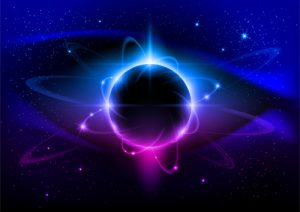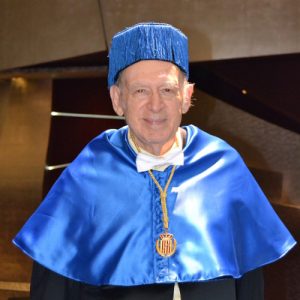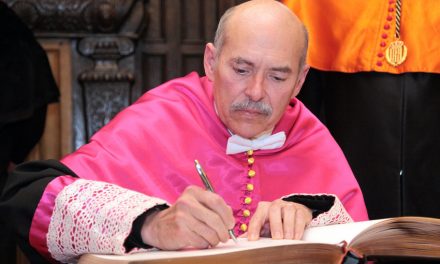“Are there more fundamental particles within quarks? We do not know, but they would be confined by a force 100 million times stronger than we know”
 Jerome Friedman, Nobel prize in Physics and honorary academician of the Royal European Academy of Doctors-Barcelona 1914 (RAED), responds honestly and rigorously to the question they ask of him most recurrently after having empirically demonstrated the existence of quarks, the smallest matter particles that are hidden inside the protons and neutrons: “Are there more fundamental particles within Quarks? We don’t know, but we can not rule it out. In any case, quantum physics tells us that these hypothetical particles would be confined by an extremely powerful force, over 100 million times stronger than we know”, explains Friedman.
Jerome Friedman, Nobel prize in Physics and honorary academician of the Royal European Academy of Doctors-Barcelona 1914 (RAED), responds honestly and rigorously to the question they ask of him most recurrently after having empirically demonstrated the existence of quarks, the smallest matter particles that are hidden inside the protons and neutrons: “Are there more fundamental particles within Quarks? We don’t know, but we can not rule it out. In any case, quantum physics tells us that these hypothetical particles would be confined by an extremely powerful force, over 100 million times stronger than we know”, explains Friedman.
The academician will give next November 7 in Seville a conference within the cycle organized by the Cajasol Foundation and the RAED with the title “¿Estamos realmente hechos de quarks? Are we really made of quarks?”. A session that opens a cycle in which three Nobel prize winners from various fields who are academic honor of the Royal Academy will give lectures in the Andalusian capital. To Friedman will be added Aaron Ciechanover, Nobel prize in Chemistry, and Erwin Neher, Nobel prize in Medicine.

Dr. Jerome Isaac Friedman
Nobel Prize in Physics 1990
Friedman explains how the latest discoveries from the European Center for Nuclear Research (CERN) confirm the real existence of quarks and that what physics has not yet discovered is probably more than we know today. However, he points out, current technology doesn’t allow us to go further. In this sense, the academician recalls that up to the eighties of the last century the scientific community also didn’t recognize the existence of these fermions. “They were said to function in a theoretical representation, but they were not real, and in any case were diffuse structures, but not elementary particles”, he says.
Now, Friedman continues with his argument, it’s so common to say that the carbon atom is composed of 6 electrons, 6 protons and 6 neutrons as consisting of 6 electrons and 36 quarks. This particle even has a size: 10-17 cm. “The first studies we did on the Linear Accelerator at Stanford University and at the Massachusetts Technology Center (MIT) between 1967 and 1974 allowed us to state that the quarks had their own structure and dynamics. Theoreticians abandoned earlier theories on matter”, says the physicist, who in his speech addresses the entire trajectory of the investigation of nuclear and quantum physics to the present, where the Superstring theory suggests that the fundamental constituents of reality are strings of a Planck length (10-32 cm).




